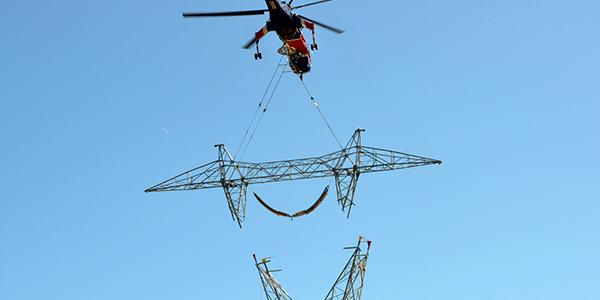By Rich Heidorn Jr.
FERC on Thursday proposed a new approach to awarding transmission incentives and a doubling of the adder for participating in an RTO.
The Notice of Proposed Rulemaking would shift from awarding benefits based on the risks and challenges of a project to one focused on economic and reliability benefits (RM20-10).
FERC, which gained authority to issue incentives in the Energy Policy Act of 2005, implemented its policy in Order 679 in 2006. Last March, it opened a docket to reconsider its policy (PL19-3). (See Stakeholders Spar in FERC Tx Incentives Docket.)
Thursday’s NOPR would eliminate Order 679’s “nexus test,” which requires applicants to show a connection between the requested incentives and the risks and challenges of the project.
“By shifting our focus to incentives based on how a transmission project benefits consumers rather than risks and challenges of building it, I think what this NOPR does is better align our policies with the law,” Chairman Neil Chatterjee said in a news conference Thursday.
The NOPR would:
- Double the incentive for joining and remaining a member of an RTO, ISO “or other Commission-approved transmission organization” to 100 basis points from 50. The incentive would be available whether or not participation is voluntary.
- Provide 50 basis points to projects that meet a pre-construction benefit-to-cost ratio in the top 25% of projects examined over a sample period, with another 50 basis points for projects that meet a post-construction b/c ratio in the top 10% of projects over the same period.
- Award up to 50 basis points to projects that show reliability benefits through quantitative or qualitative analysis.
- Award 100 basis points for transmission technologies that “enhance reliability, efficiency and capacity as well as improve the operation of new or existing transmission facilities.”
- Replace the current limits on incentives to the base return on equity zone of reasonableness with a 250-basis-point cap on total ROE incentives. It also seeks comment on whether transmission providers should be allowed to replace the zone-of-reasonableness restrictions on previously granted incentives with the hard 250-bp cap.
- Eliminate incentives for transmission facilities built by stand-alone transmission companies or “transcos.”
- Retain existing incentives for abandoned plant recovery, construction work in progress and hypothetical capital structures.
Partial Dissent
Commissioner Richard Glick dissented in part, saying the NOPR “focuses narrowly on the transmission needs of today and will do little to help the country build the transmission grid of the future.
“I am concerned that [FERC’s proposal] altogether ignores transmission projects needed to meet public policy goals, such as state carbon reduction targets, which are the country’s most pressing transmission need,” he said, adding that the commission proposed the 250-bp cap “without any evidence to suggest that transmission owner rates would be just and reasonable” with the adder.
Glick said the increase in the RTO incentive ignores Congress’ direction that the incentive is supposed to be for joining an RTO, not remaining in one. “Even worse, the NOPR proposes to double the size of this incentive from 50 basis points to 100 basis points — even though there is nothing in the record to suggest that any transmission owner would leave an RTO if not for that handout,” he said in a statement. “Simply put, the commission wants to double the cost to consumers of an ‘incentive’ that does not incentivize anything.”
Chatterjee insisted he shares Glick’s belief that increased transmission is essential to decarbonization efforts, differing only on how to accomplish the goal. He also defended the increased RTO adder, saying RTOs/ISOs provide annual benefits exceeding $10 billion. “Those benefits continue to increase as the RTOs/ISOs evolve. Nationwide, the cost of this incentive is a fraction of these benefits. But I also think there [are] increasing challenges to TO participation in the RTOs and ISOs.”
The commission also issued a final rule clarifying its filing instructions for form FERC-730, which must be filed annually by utilities receiving transmission incentives (RM20–11). The clarification was requested by the Office of Management and Budget (OMB) to comply with the Administrative Procedure Act and the Paperwork Reduction Act of 1995 (PRA).
Comments on the NOPR are due 90 days after publication in the Federal Register.




